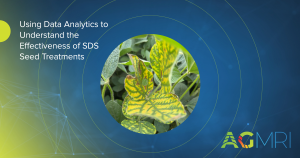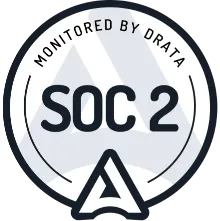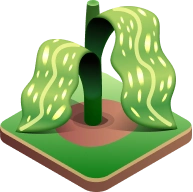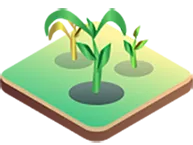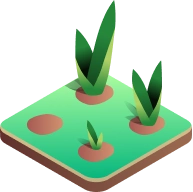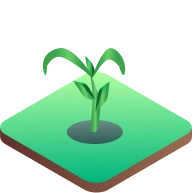Welcome to the third installment of our three-part blog series where we explore the world of data analytics and how it transforms information into actionable alerts for AGMRI users. In this blog, we’ll delve into the advanced algorithms that power our platform and highlight the alerts that help farmers make informed decisions for optimal crop management.
Leveraging Advanced Algorithms
At Intelinair, we’ve developed algorithms that take raw data, including new images, weather conditions, and more, and convert them into actionable insights. As soon as we receive remote-sensing flight data, our algorithms swing into action, evaluating fields from multiple angles to provide users with a comprehensive view of their crops.
The Power of Alerts
Alerts are the heart of AGMRI. These are events that hold significant value for users, helping them prioritize tasks and make informed decisions through the growing season. Our analytics algorithms break down complex data into meaningful pieces, highlighting the most critical events unfolding on the field. Let’s take a closer look at the alerts that are part of AGMRI.
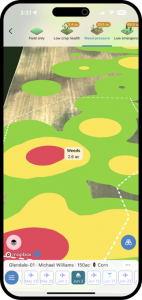
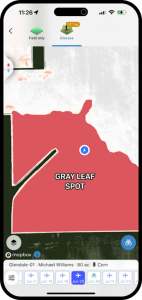
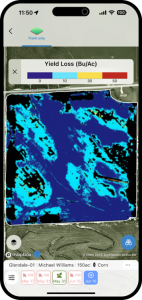
Weed Map
The Weed Map alert is designed to assist farmers in prioritizing fields affected by weeds. Using high-resolution infrared imagery and advanced Deep Learning models, AGMRI analyzes weed presence and escapes. It generates a map that pinpoints areas where weeds may be a concern. If recent herbicide application data is available, users receive notifications about weed escape alerts, enabling timely herbicide planning.
Stand Assessment Map
This alert plays a crucial role in helping farmers make replant decisions early in the season. It identifies fields and areas within those fields that exhibit crop emergence issues. Stand assessment involves evaluating the plants that have emerged and assessing their overall health, providing valuable insights for early-season crop management.
Low Emergence Alert
If a significant portion of a field has not emerged, AGMRI generates a Low Emergence Alert. This alert serves as a prompt for farmers to prioritize fields for replanting, ensuring optimal crop development.
Crop Health Map
The Crop Health Map alert reveals areas with underperforming crops relative to the rest of the field. Potential causes for poor crop health may include nutrient deficiencies, pest pressure, or drought. AGMRI combines multispectral high-resolution images and weather data with advanced Deep Learning algorithms and agronomic logic to identify areas requiring extra attention.
Low Crop Health Alert
This alert is triggered when certain areas of the field underperform compared to historical field health data. Farmers are able to easily identify underperforming areas and make more informed management decisions.
Disease Alert
Early detection of disease pressure is crucial for effective disease management. AGMRI’s Disease Alert identifies areas susceptible to disease outbreaks, enabling farmers to plan for timely fungicide applications. This alert analyzes high-resolution images and recent weather data to spot potential disease-affected areas.
Nutrient Deficiency
This alert helps locate spots where plants display significant color changes, possibly due to nutrient deficiencies. AGMRI employs advanced Deep Learning models on high-resolution imagery to assist farmers in planning nutrient applications for the upcoming season. Users can sort fields by acres affected to prioritize nutrient planning efficiently.
NVision Ag Partnership
In 2023, Intelinair partnered with NVision Ag, a company specializing in nitrogen management based on remote sensing imagery. NVision Ag generates yield-loss maps, total yield-loss estimates, and N-rate control files using high-resolution remote sensing imagery. This information allows corn growers to pinpoint areas within their fields that require additional nitrogen fertilizer and those that do not. The results are accessible through the AGMRI user interface upon request.
Variable Dry Down
This alert identifies areas of the field that are maturing faster than the rest. It indicates that these areas will likely reach full physiological maturity within the month. Farmers should evaluate these areas to determine if early harvesting is necessary to prevent potential losses due to grain shattering or adverse weather conditions.
Conclusion
With these alerts, AGMRI users have access to valuable, real-time information to help them make informed decisions throughout the growing season. From weed management to nutrient applications and disease control, our platform offers a comprehensive suite of tools to enhance crop management and optimize yields.
If you have any questions or would like to explore AGMRI’s features further, please don’t hesitate to reach out. Thank you for joining us on this journey of agricultural innovation!



